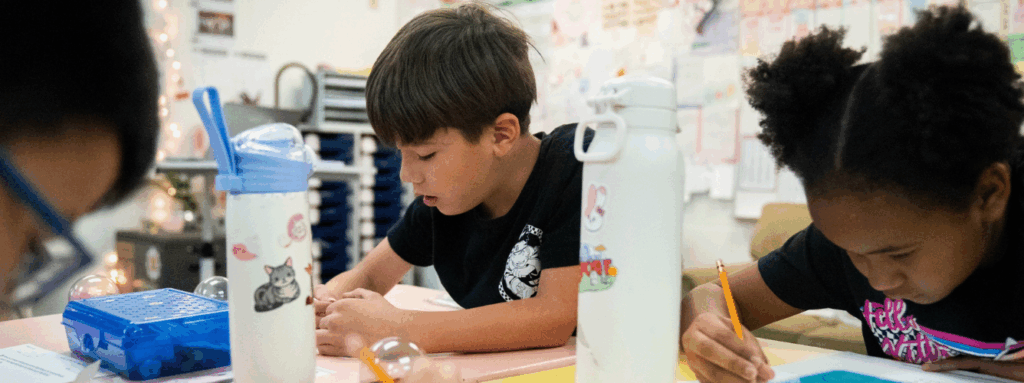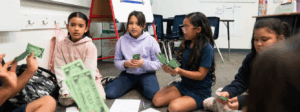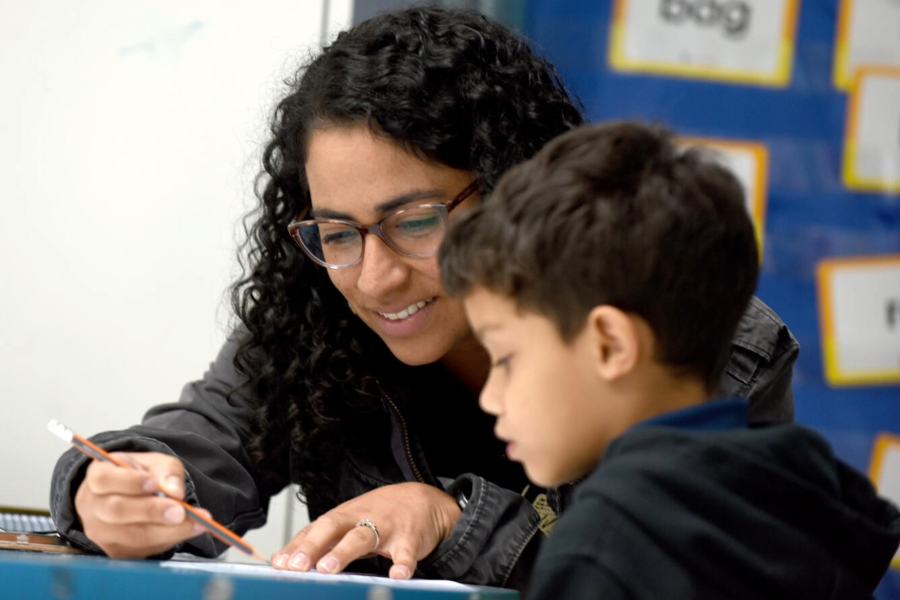To thrive in a changing economy, it is essential for young people to connect their academic learning to real world careers. However, many students only begin to have access to career exploration and work force experiences when they reach high school, despite the fact that young people begin forming their long-term aspirations in elementary and middle grades. Even then – outdated approaches often appear as one-off career sessions or credentials for fields that may not hold the high-skill, high-wage, and in-demand jobs of the future.
Educators and school leaders know there is better way. At TNTP, we are building partnerships with school systems where learning connected to careers is integrated into students’ classroom curriculum and supports them long-term to enter meaningful and sustaining professions. Rather than funneling high school students into technical education tracks that are not linked to core academics and do not necessarily lead to good jobs, school systems are committing to new models that begin in a young person’s earliest years.
These approaches are designed to increase academic relevance , provide true career optionality, and ultimately support a smooth transition for young people into higher education and the workforce. Below we explore key components of TNTP’s strong career-connected learning model through our collaborations with states and districts across the country.
From Exposure to Immersion: Career-Connected Learning Throughout K-12
Expose:
In early elementary and middle grades, schools should have systematic opportunities to build awareness of careers. This might look like employer-led classroom visits and speakers, virtual discovery programs, career trips—all linked to what is being learned in class. This exposure shines a light on a wide variety of job possibilities while helping students connect their academic learning with real-world challenges.
Through funding from GM, TNTP recently partnered with Kentwood Public Schools (KPS) to reimagine the district’s career-connected learning model in hopes of strengthening the school system’s K-5 STEM programs. KPS held focus groups to get feedback from students on what gaps existed in their current program. Among the 28 elementary students interviewed, only one recalled learning about potential STEM careers in school. Our aim was to support the district develop consistent career exposure opportunities—connected to academic content in each grade band—for students.
TNTP conducted a landscape analysis to shed light on the school’s current CCL programs, co-designed STEM electives, supported the development of advisory committees made up of local business leaders, families, teachers, and other community members who could help show students the wide variety of career options, and co-created a detailed curriculum map that integrated durable skills.
Explore:
As students progress through their education journey, they should have access to deeper and more structured exploration of potential career interests. This might mean offering more formal career assessments, personalized career guidance, and helping students develop career plans, still connected to classroom learning. TNTP has supported states and districts with a range of strategies and resources aimed at sustaining CCL as students advance in their sophistication and abilities to think about future careers.
For example, in a mid-sized Michigan district, we developed K-8 curriculum maps specifically focused on how high-quality instructional materials can support career exploration. We have also partnered with the Texas Education Agency to develop an effective advising framework which considers the systems and structures a district would need to establish to ensure an internal culture of career advising and standardized career development for students over multiple grade bands. The Effective Advising Framework empowers every student to engage in individual career and academic planning and equips educators with the knowledge, resources, and time to support all students in planning and preparing for postsecondary success.
Engage and Immerse:
When young people enter high school, hands-on participation in real-world career settings is crucial to prepare them for a smooth transition into the workforce. Apprenticeships and internships outside of school or participation in career technical education (CTE) pathways provide deep learning in a particular career field or industry and can help students attain industry certifications and credentials.
It is important to remember that while these may be distinct classes or streams, CTE pathways are most powerful when they are integrated into the core curriculum and when they connect to fields that offer high-wage, high-skill, and in-demand jobs.
For example, a regional initiative supporting schools and communities in northeast has partnered with the Niswonger Foundation and TNTP to develop a Biotechnology pathway for high schoolers that embeds Biology alongside career technical education courses in applied biotechnology. Students can access both in-depth content learning and coursework connected to the many applications of biology, engineering, and technology, like the development of cancer treatments, innovations in agriculture, or designing solutions for the climate challenges of the future. Students can dive deep into Biology through the lens of biotechnology with a clear understanding of the relevant and exciting career options science learning offers.
In addition, as part of this pathway, students can earn an industry credential and are introduced to a network of industry partners and supportive adults in fields they may want to pursue. These Tennessee districts have not only considered the learning components and systems of career-connected learning but also acknowledged that other factors like social capital and personal supports are integral to career opportunities and long-term success.
Future-Ready Students Start with Career-Connected Classrooms
In a time of widespread economic and workforce change, these school systems are pioneering a new model of CCL that meets the needs of students and industry alike. To make economic and social mobility a real possibility for every student, more states and systems must move towards approaches that increase engagement and relevance of core curriculum, provide true career optionality for students, and offer a myriad of structured learning pathways to prepare young people for higher education and careers.
Read more about why it’s so urgent to commit to career-connected learning now and reach out to TNTP for support in designing the right CCL model for your school system.






